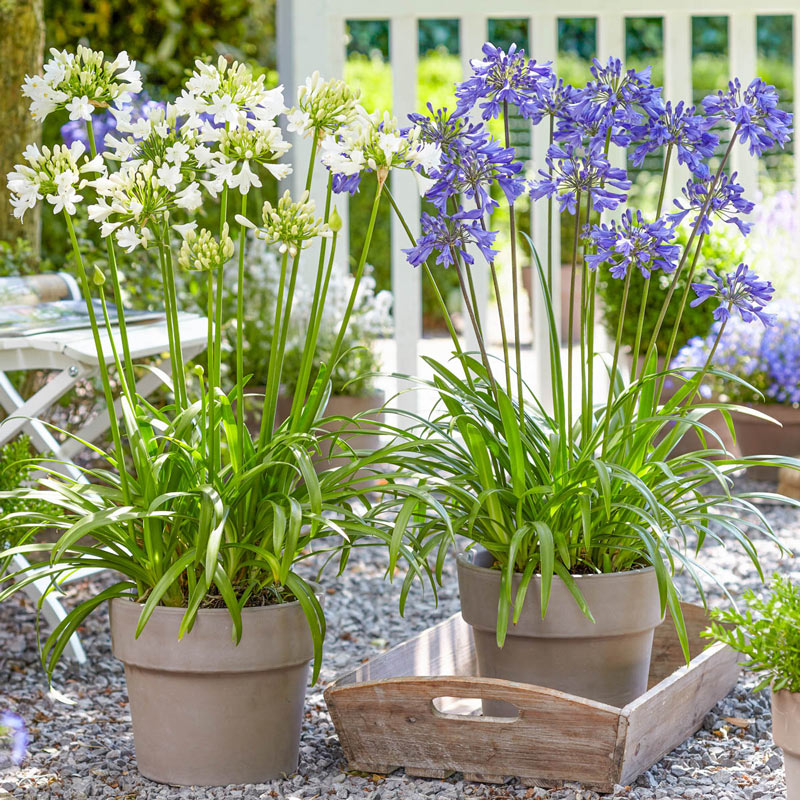Mastering the Art of Agapanthus Care: Necessary Actions for Healthy Growth and Vivid Blooms
In the world of gardening, the growing of agapanthus stands as a fulfilling venture for those that seek to support these elegant flowering plants. From selecting the best range to understanding pruning strategies, the trip in the direction of growing prospering agapanthus plants is diverse and holds the key to opening the full capacity of these botanical treasures.

Selecting the Right Agapanthus Selection

When choosing the best Agapanthus variety for your yard, consider aspects such as climate suitability, bloom color, and growth routine. Furthermore, think about the climate in your area to guarantee the Agapanthus selection you select can prosper in your specific problems. Understanding the development habit of various Agapanthus varieties is essential for proper placement within your garden.
Perfect Planting Problems
Considering the optimal ecological requirements is necessary for successful Agapanthus growing. Agapanthus plants are sensitive to chilly temperatures and should be shielded from frost during winter season months.
To make sure healthy and balanced development and vivid flowers, plant Agapanthus bulbs at a deepness of regarding 2-4 inches and area them 8-12 inches apart. Mulching around the base of the plants helps retain wetness and reduces weed development.
Watering and Feeding Tips
Keeping appropriate wetness levels and giving necessary nutrients are crucial aspects in the care routine for Agapanthus plants. When it comes to sprinkling Agapanthus, it is vital to strike an equilibrium. These plants like continually damp dirt however are vulnerable to root rot if overwatered.
Feeding Agapanthus is crucial for promoting healthy and balanced development and prolific blossoms. Apply a well balanced plant food, such as a 10-10-10 formula, in the early spring as new development emerges. By following these watering and feeding tips, you can ensure your Agapanthus plants grow and generate vivid, durable blossoms.
Pruning Strategies for Agapanthus
Pruning Agapanthus plants at the ideal times and with proper techniques is vital for maintaining their health and wellness and promoting optimum growth and blooming. The excellent time to prune Agapanthus is in late winter or early spring before new development arises. Begin by removing any kind of yellowing or dead leaves near the base of the plant. Cut them as close to the ground as feasible without harming the emerging shoots.
Deadheading spent blossoms can likewise reroute the plant's energy right into generating more blooms rather than establishing seeds. If you want to accumulate seeds for breeding, leave some flowers to completely dry and fully grown on the plant.
Remember to make use of tidy, sharp devices company website to make precise cuts and reduce the danger of presenting illness. Agapanthus. Routine trimming will certainly aid maintain your Agapanthus looking healthy and cool while making sure a plentiful display of attractive blooms
Taking Care Of Usual Parasites and Conditions
After ensuring correct trimming strategies for Agapanthus, it is important to attend to typical parasites and diseases that can impact the health and vitality of these plants. Agapanthus plants are normally hardy but can still fall victim to particular problems. One common insect that impacts Agapanthus is the Agapanthus gall midge. This small, orange fly lays its eggs in the foliage, causing distorted growth and flower buds that fail to open. To battle this parasite, prune and ruin any kind of afflicted plant parts and take into consideration making use of insecticidal soap.
One more usual problem is fungal fallen leave spot, which presents as dark sores on the leaves. To avoid fungal diseases, make certain excellent air blood circulation around the plants, stay clear of overhead watering, and remove any contaminated fallen leaves quickly. Additionally, Agapanthus plants can struggle with origin rot if they are grown in inadequately draining pipes dirt. To avoid this, plant Agapanthus in well-draining soil and avoid overwatering. By being attentive and taking punctual activity versus conditions and pests, you can aid your Agapanthus plants grow and generate vivid my website blossoms.

Conclusion
Finally, mastering the art of agapanthus treatment involves selecting the appropriate selection, giving perfect growing conditions, correct watering and fertilizing, appropriate pruning methods, and dealing with usual insects and illness. By following these crucial steps, you can make sure healthy development and vivid blossoms for your agapanthus plants. Bear in mind to routinely keep track of and linked here maintain your plants to promote their total wellness and long life.
To make sure healthy growth and vivid flowers, plant Agapanthus light bulbs at a deepness of regarding 2-4 inches and area them 8-12 inches apart. By complying with these watering and feeding pointers, you can ensure your Agapanthus plants grow and generate dynamic, lasting blossoms.
One common pest that affects Agapanthus is the Agapanthus gall midge. In addition, Agapanthus plants can endure from root rot if they are planted in badly draining dirt. By adhering to these crucial actions, you can ensure healthy development and vibrant blooms for your agapanthus plants.